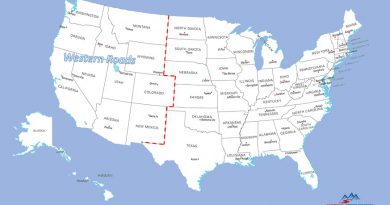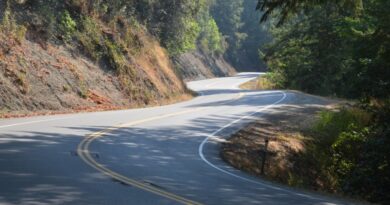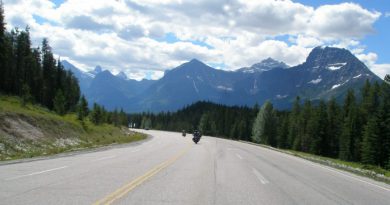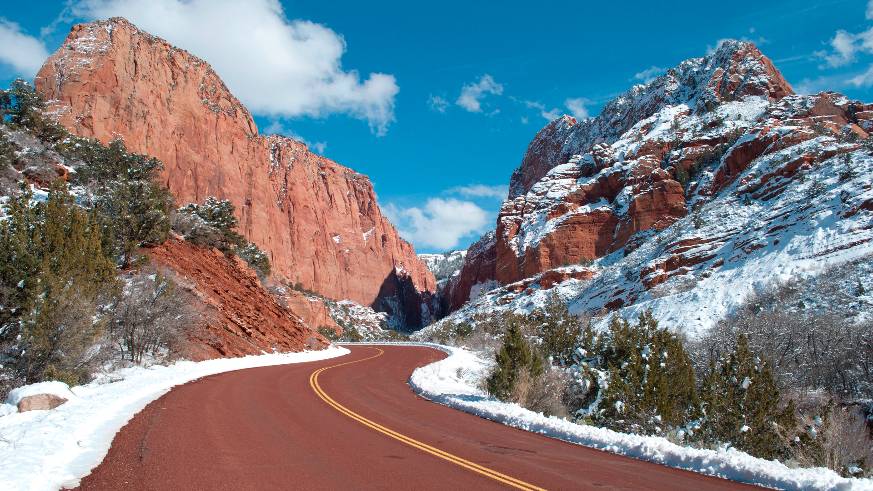
Riding the National Parks – 2025 Edition
Editor’s Note: This article was originally published on February 26, 2024 and has since been updated with the latest National Park details and seasonal changes for the 2025 riding season.
National parks are perennial favorites for sport touring motorcyclists. The combination of unblemished natural beauty and meandering roads made for motorcycling is hard to beat. So much so that every year it seems more and more people from all over the world are crowding into national parks across the country.
A well thought out travel plan will make your visit memorable. Here’s what you should know to get the most from your visit to America’s national parks.
Many National Parks to Choose From
There are 61 national parks scattered across the 50 states, plus one each in American Samoa and the US Virgin Islands. Each of these 63 parks boasts scenic landscapes, historical interest, and a variety of interesting landmarks. The best known parks are famous for their signature attractions. For example, the Grand Canyon, Old Faithful in Yellowstone, or the Smokey Mountains. But the history and scenery in the majority of national parks is more obscure, requiring a little research to discover.
Guidebooks are a reliable source of information about park history, attractions, and amenities; for example, Your Guide to the National Parks by Michael Joseph Oswald, published by Stone Road Press. Many authors take the time to group parks into lists around themes such as attractions, lodges, and the like making it easier for readers to focus on parks that cater to their specific interests.

For a comprehensive list of national parks in each region of the country
please see the article Explore Your National Parks.
As your list of parks narrows, use the National Park Service website to find updates on current park conditions, including active and planned road construction. The park service site also includes helpful seasonal weather tables. Unfortunately, information about visitor traffic patterns is harder to find. We collected park visitor data from 2022 and 2023 and summarized it by region in the related article Explore Your National Parks.
Don’t Overlook Other Significant Sites
National Parks are the crown jewels of the US National Park system. But there are many other sites worth including in a route plan. The National Park Service also maintains hundreds of parks designated as National Monuments, Historic Sites and Trails, and National Preserves. Like national parks, these sites were set aside to protect significant natural, cultural, and historical resources for the enjoyment of generations to come. The historic or scientific significance in many cases rivals nearby parks.
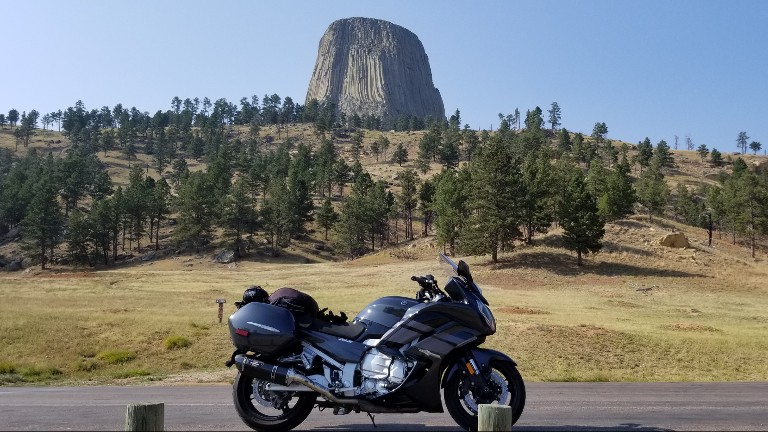
Often within a hundred miles or so of a national park, these national monuments and historic sites are easy to work in to a route plan. Again, refer to the National Park website for detailed visitor information.
Seasonal Weather
Weather plays a crucial role on any ride. With the national parks spanning the continent, often in remote areas because of their unique environment, it comes as no surprise that weather conditions vary widely from park to park and season to season.
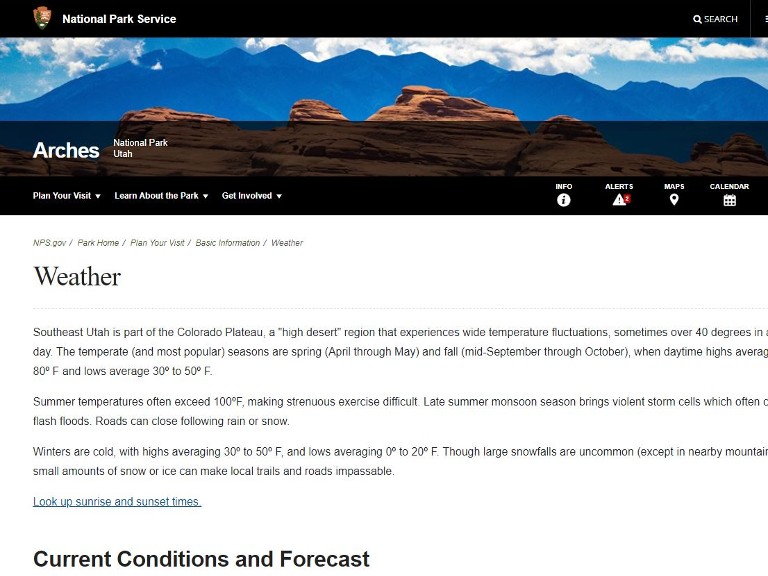
Be prepared for weather extremes. Yellowstone is famous for surprising visitors when a sunny morning turns into a hailstorm filled afternoon. Parks in the east frequently expose riders to sudden downpours. While these weather events are typically short-lived, they do make for uncomfortable if not dangerous riding.
The National Park Service provides current and seasonal weather information for each park. The website is a good starting point for deciding when to ride, but always double-check the weather as the ride approaches using both the park website and a trusted weather site like Accuweather
Reservations Sometimes Required
Dealing with stop-and-go traffic is frustrating anytime, but no more so than when it takes away from enjoying the natural beauty on display everywhere in a national park. And congestion at scenic overlooks and other landmarks leaves little space for picture taking or simply savoring the moment. Thankfully, the Park Service put a timed entry reservation system in place to ensure everyone has the best possible experience.
For the 2025 riding season, 8 of the 63 national parks require a timed entry reservation. In addition, they may be needed in certain areas of the park and only during certain times of the day. For example, Mount Rainier National Park requires a timed entry reservation for two areas of the park, but only between the hours of 7am and 3pm. No reservation is required before or after those times, nor in other areas of the park. Visitors with lodging or camping reservations do not need a separate timed entry reservation at all.
Timed Entry Reservations allow one car or motorcycle to enter the park anytime within the reserved two hour period. Reservations are separate from, and in addition to, park entrance fees. To obtain a reservation go to the Recreation.gov website. While the reservation itself is free, the site requires a $2.00 processing fee. The fee is non-refundable, but the reservation time can be changed later.
One last point about reservations; some activities, such as parking, hiking, climbing, and day use, may require a separate permit. Depending on the park and time of year, the number of permits issued each day may be limited to control congestion and protect park resources from overuse.
The Park Service may update these rules throughout the year. For current information on each park’s reservation and permit requirements and to purchase a reservation or permit, visit the National Park Service website or Recreation.gov.
Entrance Fees and Park Passes
The National Park service collects a fee for each vehicle entering most national parks; some, like Great Smoky Mountains National Park, do not charge an entrance fee although a fee for parking may be needed. When an entrance fee is required, it is separate from, and in addition to, other permits and covers the vehicle and everyone in it (up to 15 passengers). An entry pass purchased at the gate is good in the same park for seven consecutive days from the date of purchase.
The cost of a standard entry pass varies from park to park, but motorcycles are usually charged a slightly lower fee. As an example, the standard entry pass to Big Bend National Park in Texas is $30 for a car but only $25 for a motorcycle. Current fees are posted on the website for each park.
If you plan to visit several parks, or if you are a senior age 62 or older, you might consider a park pass. In 2025, an annual America the Beautiful Pass costs $80, while seniors can purchase an annual Senior Pass for $20. For even greater value, seniors can purchase a lifetime Senior Pass for $80. Passes are good at national parks and over 2,000 federal recreation sites across the country.
Park Etiquette for Motorcyclists
National parks are somewhat like sanctuaries. While they are filled with temptingly twisty roads, riders should do their best to exercise restraint. That’s particularly so in areas near trails and vista points. But of course, parks are vast and roads stretch out for miles with minimal traffic. In areas like that, concern centers on colliding with a wild animal, especially deer. As always, use your better judgement.
Traffic laws in national parks, including helmet laws and noise levels, are the same as other roads in the state in which the park is located. Follow the speed limits. When riding in a group, don’t hold up traffic. Pass (and be passed) with care. And for adventure riders out there, try to stay on properly designated roads.
When it comes to parking, motorcyclists have a lot of options as long as they don’t block traffic, pedestrian walkways, or scenic views. Nevertheless, when possible, use designated parking to keep your motorcycle (and you) out of harm’s way.
When stopping for pictures, do your best to pull completely off the road. Use established pullouts whenever possible. This probably goes without saying but be careful approaching wild animals. While they share the park with visitors, they are nevertheless wild and unpredictable.
Bottom line, respect the park and your fellow visitors. Treat it like you own it, because in many ways you do.
Visitor Centers, Park Amenities, and Events
If you believe that the national parks are living museums, then you should think of the visitor centers as museum stores. In fact, every national park has a visitor center that serves up more than souvenirs. Located near the entrance, the park visitor center should be everyone’s first stop. Inside, visitors will find park maps, and helpful Park Rangers who are always happy to answer questions. This is the place to get familiar with the park geography and wildlife you will encounter, and learn the history of the park and surrounding area.
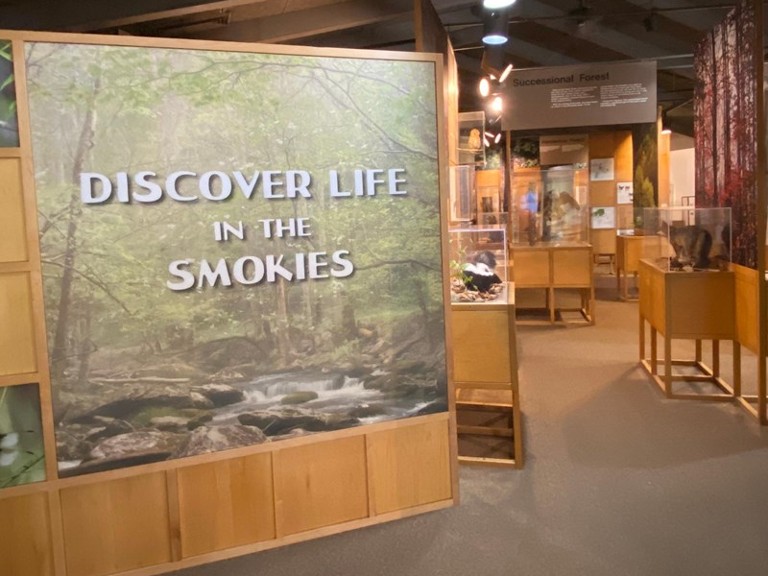
Road projects are common in national parks throughout the summer. Most projects are relatively small, but some can cause significant traffic delays. Refer to information on the park website to plan around the work and remember to check current road conditions at the visitor center as well.
The National Park Service hosts a wide range of events in the national parks throughout the year. Some are ranger-led educational programs covering wildlife, geology, and historic events, others are cultural demonstrations, while still others celebrate special occasions such as the anniversary of a park’s founding. Use the National Park Service Event Search page or ask at the visitor center to find out if any events are planned during your visit.
Inspiration and More
The National Park Service works tirelessly to inform and inspire visitors. Each park is different, highlighting unique landscapes and historic sites; but nevertheless, featuring iconic road signage, friendly visitor centers, and so many other architectural cues.
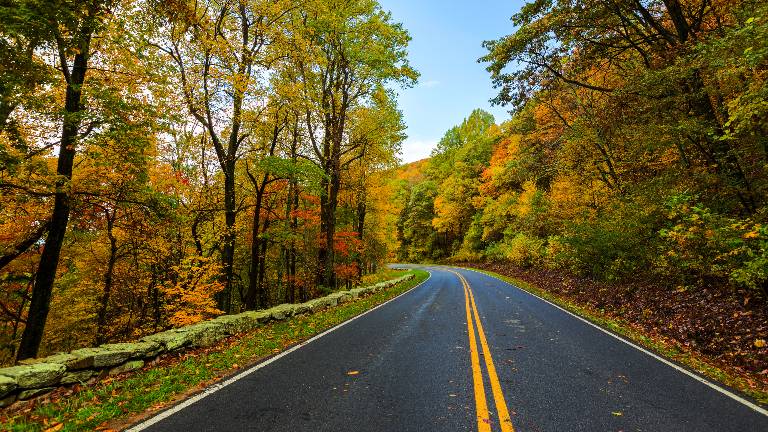
Don’t be surprised if riding through a national park takes on a spiritual dimension, as the vast landscapes and untouched natural beauty can inspire a deep sense of awe and connection with the history that shaped our country.
[placeholder text]
Your response is used by American Sport Touring only, we do not store or sell your information.
Please read our Privacy Policy.
Additional Resources
| Resource | Description |
|---|---|
| Explore Your National Parks | A comprehensive and cross linked list of national parks with updated visitor information from American Sport Touring. |
| National Park Service website home page | Start here to find and explore everything about each national park from weather to roads to special events. |
| National Park Service event search page | Start here to look for special events of interest that may be scheduled at any of the national parks. |
| Recreation.gov | This is the place to go for timed entry reservations and to pre-purchase permits for activities, as well as standard entry passes (i.e. for a single park visit). |
| USGS Store | Head to the US Geological Survey site to purchase an America the Beautiful Park pass or a Senior Pass both of which cover all federal recreation lands including the national parks. |
| Accuweather | This site has useful long-range (i.e. months into the future) forecasts that augment weather indications taken from the National Park Service weather almanac. |

by Staff Writers
The American Sport Touring writing team represents a diverse group of passionate sport touring motorcycle riders and industry experts dedicated to delivering insightful, well-researched content. Our contributors, both within the organization and guest writers, bring deep firsthand experience with sport touring motorcycles, gear and accessories, and destination discovery and route planning. No matter the assignment, each upholds the American Sport Touring commitment to high-quality, informative, and trustworthy content.

